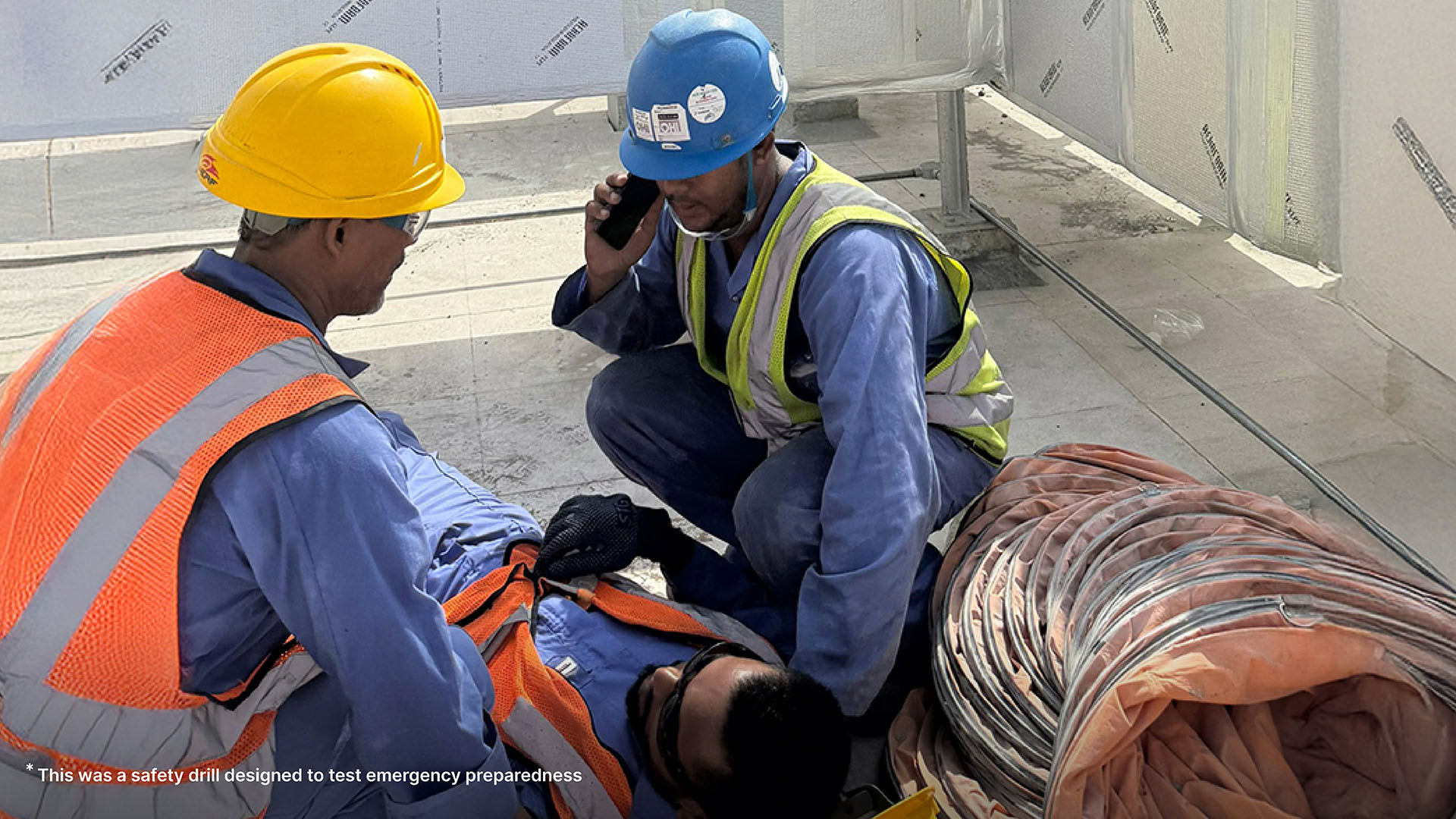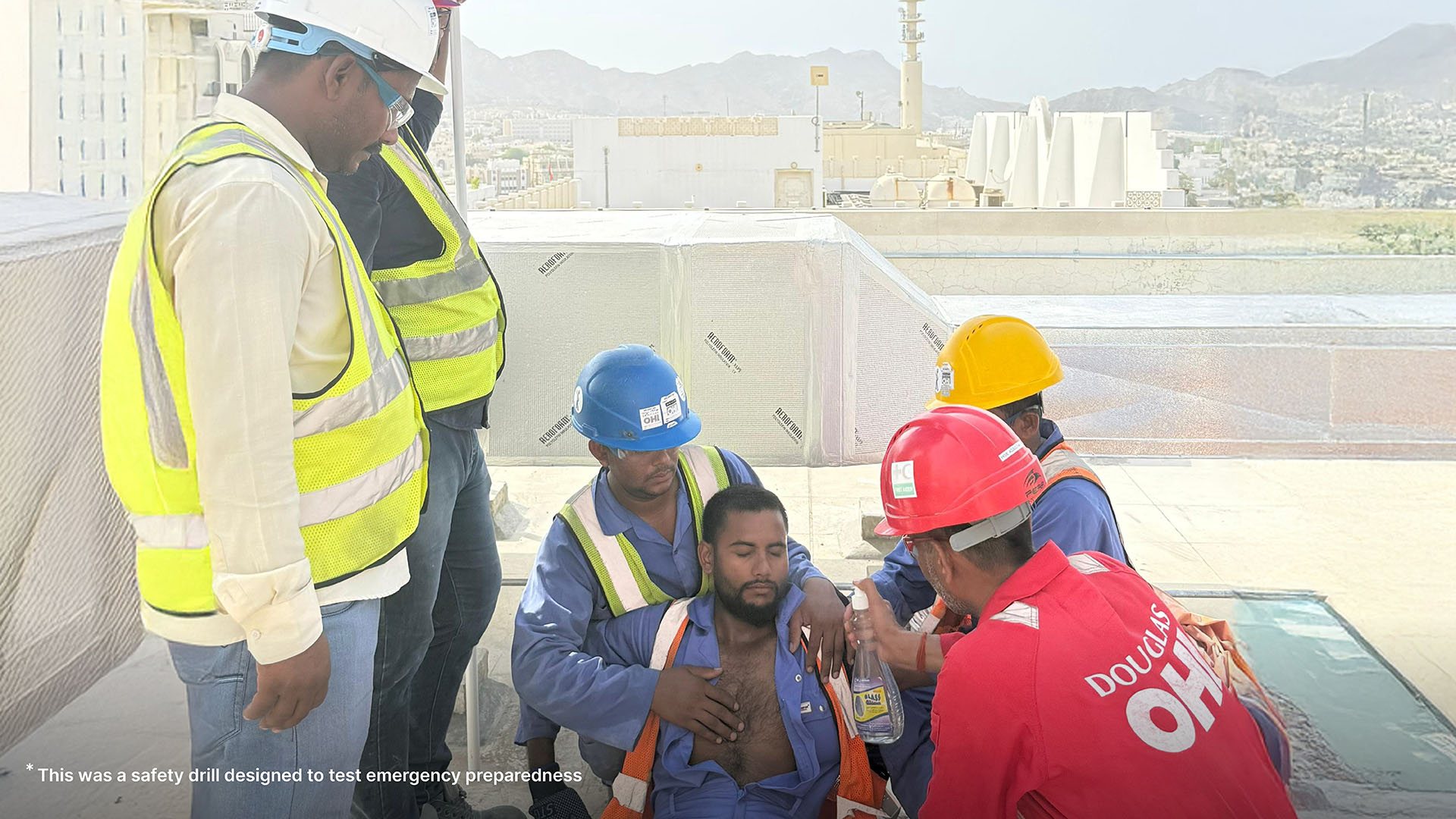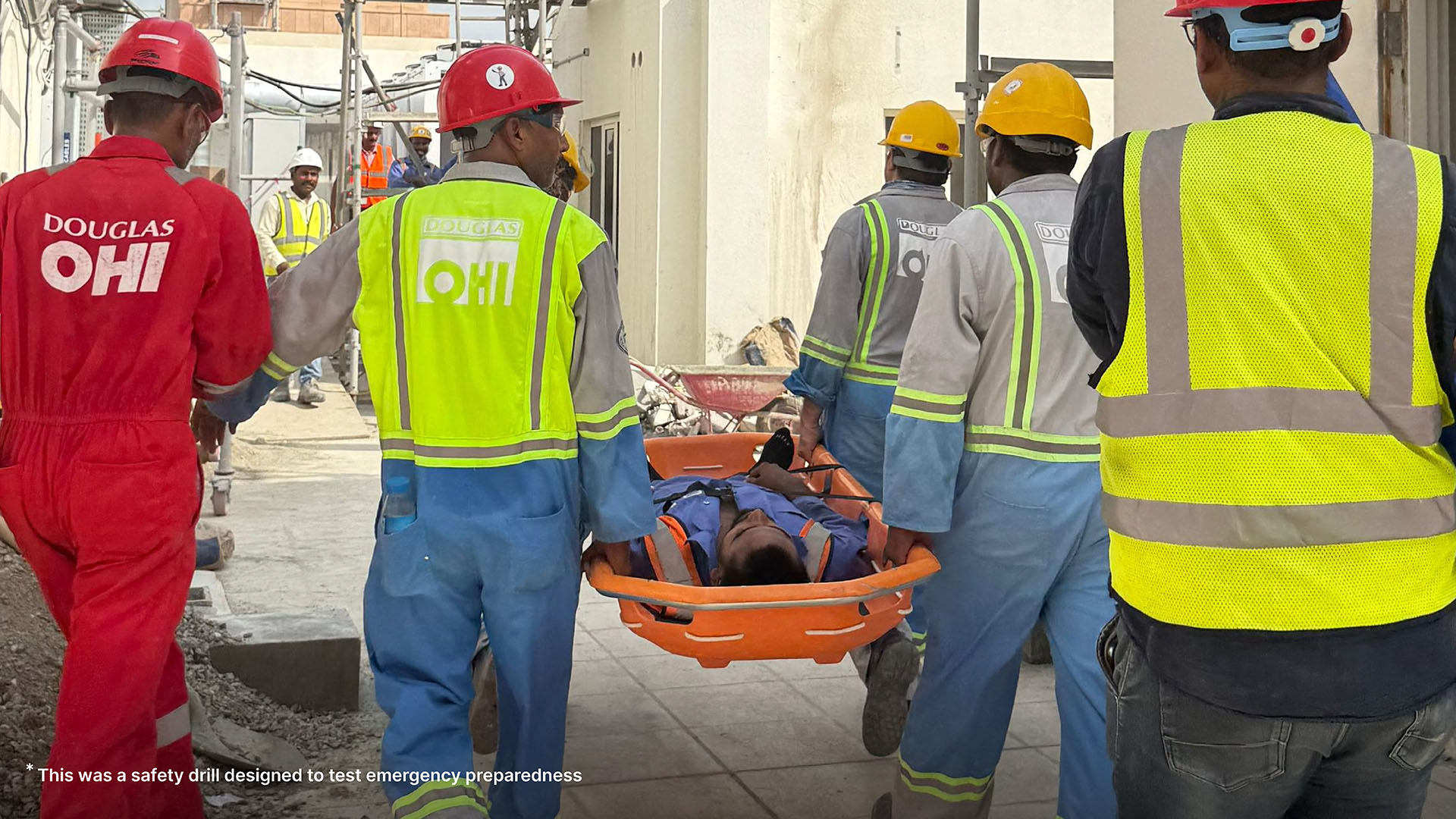At Douglas OHI, the health and wellbeing of our workforce is central to how we operate. With extreme heat being a significant risk across our projects, we recently conducted a Heat Stress Medical Emergency Drill to strengthen preparedness and reinforce our proactive safety culture.
The drill was designed with clear objectives to:
• Test recognition and reporting of heat stress symptoms.
• Evaluate the effectiveness of first responders and first aid treatment.
• Assess communication and escalation procedures.
• Review transport and medical assistance arrangements.
• Identify opportunities for improvement in our site-specific heat illness prevention plans.
The exercise simulated a scenario where a worker collapsed due to suspected heat stress. Colleagues swiftly raised the alarm, triggering the emergency response sequence. First aiders reached the scene within the five-minute target window, relocated the worker to a shaded area, and initiated cooling techniques such as loosening PPE, applying cold compresses, and providing water where safe to do so.
As the simulation progressed, the situation was escalated to mirror a potential case of heat stroke. This allowed teams to practice arranging medical transport to the site clinic and ensuring all communication and reporting protocols were followed.
The drill provided valuable insights into both strengths and areas requiring further reinforcement, particularly in coordination and response speed. These findings are being reviewed to further enhance our heat illness prevention plan and ensure continuous improvement in our safety standards.
By embedding such practical training into our operations, Douglas OHI not only ensures regulatory compliance but also demonstrates our commitment to a culture where every individual is empowered to recognise, respond, and act decisively in the face of heat-related risks.




